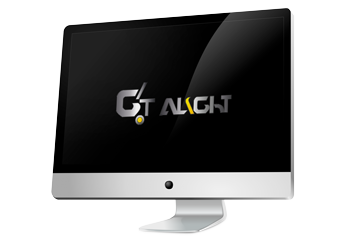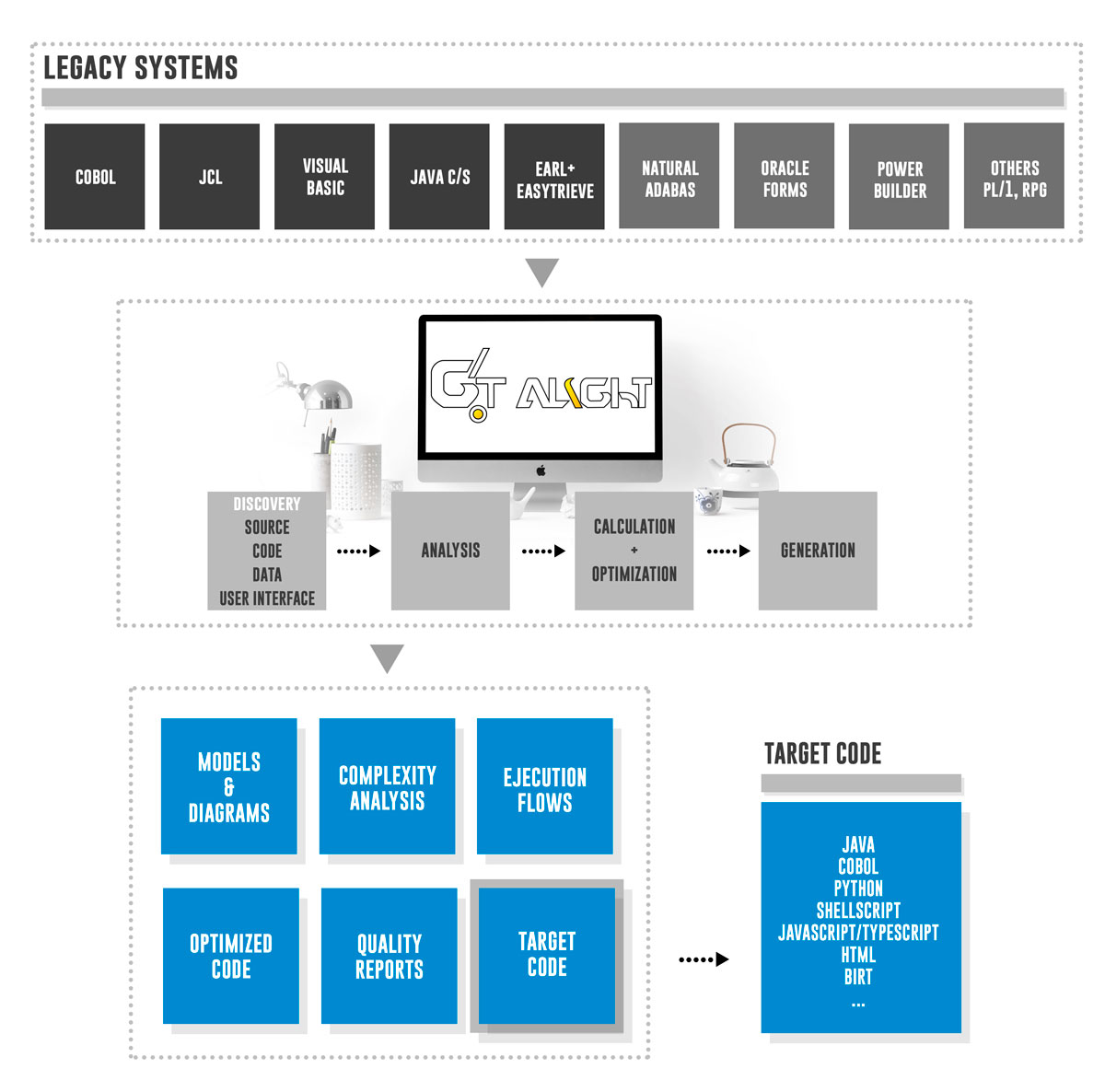Go4ITAlight
 Go4IT Alight -A powerful tool for the analysis of legacy code and its transformation into a modern environment
Go4IT Alight -A powerful tool for the analysis of legacy code and its transformation into a modern environment
It is the most advanced toolset for evaluation, documentation, transformation and optimization of legacy systems.
Go4IT Alight is based on compiler technologies and language models, which allow the implementation of fully automated modernization projects, with much greater guarantee of success, a tighter economic investment and independence of the programing languages.
Our competitive advantage: the Intermediate Model - Pivot Language
Go4IT Alight is capable of interpreting and transforming different programing languages using a specific grammar system for each of them. in order to correctly handle all these different languages, Go4IT Alight includes an internal intermediate model or pivot language. This pivot language is used to obtain a representation of the programs that is independent from the technology. All the code analysis and translation processes included in Go4IT Alight use this intermediate model as input:
- Discovery: understanding of the internal code architecture.
- Analysis: extraction of documentation from the code, detection of dead code, and other relevant facts.
- Optimization: optimization and refactoring of the code based on the target architecture, as well as characteristics of the legacy environment.
- Generation: transformation to a new target language.
The Pivot Language is a complete language, generated by the compilation process in Go4IT Alight, which includes every feature of the programing languages (for example, variables, functions, data model, user interface...). With this intermediate model, adding a new language to the tool can be done in a short time (from 1 to 3 months). In addition, once a new language is connected to Go4IT Alight, all the existing analysis, optimization and translation tools can be used directly on the new language.

